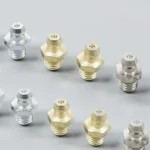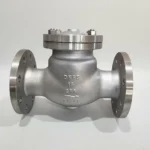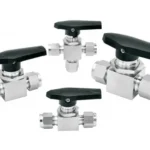Walter instrumentation valves
are fully interchangeable with Swagelok® & Parker A-Lok® and Parker CPI™. Our China-made fittings are used in instrumentation tubing systems in all processes, including oil and gas, pulp and paper, steel manufacturing, and energy.
Instrumentation valve industrial performance and quality requirements:
The main performance indicators of instrument valves are nominal diameter, connection mode, structure type, working principle, sealing material, and so on. The main quality indicators are leakage, strength and stiffness, dimensional tolerances, surface roughness, and so on. There are many types of instrumentation valves. According to the form of movement of the closing member, it can be divided into linear motion type and rotary motion type. According to the number of channels, it can be divided into single-channel types and double-channel (or multi-channel) types.
According to the connection mode, it can be divided into threaded connection type, flange connection type, welding type, clamp connection type, and so on. The structure type can be divided into globe valve, ball valve, butterfly valve, diaphragm valve, plug valve, Gate valves, check valves and safety valves, Relief valves, etc.
The selection of instrumentation valves should be based on the working conditions of the system, that is, according to the medium (such as liquid, gas, or steam), working pressure, Working temperature, Flow rate, and so on to choose。
Instrumentation valves are widely used in various industrial sectors such as petroleum, chemical industry, metallurgy, electric power, Papermaking, Pharmaceutical, food, etc., to regulate and control working conditions. Instrumentation valves play an important role in ensuring the normal operation of production and process equipment and are an indispensable component in modern industrial automation systems.
There are many types of instrumentation valves on the market, each with its advantages and disadvantages. When choosing, you should first understand the basic types of instrumentation valves and then, according to the actual needs of the system, select the appropriate valve type.
Walter needle valves, ball valves, check valves, plug valves, block and bleed valves, safety valves manifold, and a wide variety of tubes and fittings are manufactured in stainless, brass, and carbon steel. All our products are made to the highest quality standards to provide our customers with superior products inserted into a seat. The needle valves we offer at Walter are made from high-quality materithatll valves
are another type of valve commonly used to control the flow of fluids. Ball valves are named for their ball-shaped knob to open and close the valve. The ball valves we offer at Walter Walter are from high-quality materials that provide a tight seal.
Check valves that allow fluid to flow in only one direction and prevent backflow. Check valves are available in a variety of sizes and designs. The check valves we offer at Walter are mWalterom high-quality mater is designed to provide a tight search.
Plug valves are used to start, stop or regulate the flow of fluids. Plug valves have a plug inserted into a seat to open or close the valve. The plug valves we offer at Walter are made from high-quality materials with a tight seals.
Block and bleed valves are used to isolate a section of a piping system. Block and bleed valves have two ports: one for blocking the flow of fluids and one for bleeding off the pressure. The block and bleed valves we offer at Walter are made from high-quality materials designed to provide a tight seal.
Safety valves are used to relieve pressure in a piping system. Safety valves are designed to open automatically when the pressure in a system exceeds the set point. The safety valves we offer at Walter are made from high-quality materials, that old valves control the flow of fluids in a piping system. Manifold valves have multiple ports that allow fluid to flow in and out of the valve. The manifold valves we offer at Walter are made from high-quality materials that provide a tight seal.
A leak-proof seal is obtained through proper ferrule action as the ferrules are tightened onto the tubing via axial thrust provided by the nut. The ferrule provides a leak-proof seal when the nut and ferrule are adequately tightened to to to to to the specified number of turns.
Suppose you are looking for reliable and high-quality tube fittings, er fittings. Our interchangeable tube fittings will provide you with a leak-proof seal that you can rely on. Contact us today to learn more about our products and how we can help you with your instrumentation tubing needs. Liquid flowing through a tube creates pressure. This pressure is counteracted by a spring inside the fitting body. Tension on the tubing from installation or thermal expansion and contraction keeps the ferrules from backing off. As long as this tension exists, the seal will not leak.
When disconnecting fittings, loosen the nut before unthreading the body from the tubing. This will prevent damage to the ferrule and possible leakage when reconnecting the fitting. The connection will only be secure if the body is threaded onto the tubing far enough for the ferrule to bottom out in the counterbore. If the tubing is not inserted far enough, there will be a gap between the end of the tubing and the face of the fitting, resulting in a leak. It is important to note that when using Swagelok or parker a-lok fittings, the user must follow the same process in order to achieve a leak-proof seal.
2022 potential instrumentation valve development direction:
The primary trend of instrumentation valve development in the future is miniaturization, lightweight, energy saving, environmental protection, and intelligence. Miniaturization means that the size and weight of instrumentation valves will be reduced while maintaining or improving performance. Lightweight means reducing the dead weight of instrumentation valves while maintaining or improving performance.
The energy-saving trend of instrumentation valves means that the power consumption of instrumentation valves will be reduced while maintaining or improving performance. The environmental protection trend of instrumentation valves means that the pollution caused by instrumentation valves will be reduced while maintaining or improving performance. The intelligent movement of instrumentation valves means that the instrumentation valves will be more and more intelligent while maintaining or improving performance.
The above is the basic introduction of instrumentation valves. I hope it can be helpful to everyone. If you need to purchase instrumentation valves, please get in touch with us.
How many types of instrument valves are there?
The valve operates in two modes: by hand and by by by actuators.
Which o thethethethe ment valves?
Instrumentation Valves – needle ball, cylinder valve, and various valve ranges,s, including ball valves, needle valve manifold valves, pressure valves, and hoses.
What is a gauge root valve?
Root valve expansion for gauges. The root valve of the PANAM Gauge is for connection between the impulse and transmitter systems. The manifold comprises a single valve configuration to provide easy isolation, calibration, block, and bleed for gauges, pressure switches, and static pressure transmission devices.
Valve stem packing
A rubber gasket is required for an effective seal from the stem to the hood. This is called packing and has parts such as Gland followers, which compress the packing with glands in what is called the packing. Glands, the bushes that cram packing into the box. A packing container where the packing can be shortened. Packing is available in various materials such as TELON® polymer, elastomer, etc. The back seats are the seats in the car. The seal protects the valve stem against the valve bursting while the valve is open to the air.
Basics of Valves | Functions of Valve | Instrumentation Tools
Valves are mechanical instruments controlling the flow and pressure in the systems and processes in which they operate. These are essential parts in pipes used to convey liquids, gases, liquids, vapors, etc. The valve type includes a gate, globe plug, butterfly, check valve, and diaphragm. Various models are provided, each offering unique capabilities and different functionalities. Some valves operate independently, while others work with the help of an actuator or pneumatic or hydraulic system.
Valves are mechanical instruments controlling the flow and pressure in the systems and processes in which they operate. These are essential parts in pipes used to convey liquids, gases, liquids, vapors, etc. The valve type includes a gate, globe plug, butterfly, check valve, and diaphragm. Various models are provided, each of which offers unique capabilities and different functionalities. Some valves operate independently, while othersworkith the help of an actuator or pneumatic or hydraulic system.
Valve stem packing
For an effective seal from the stem to the the the the the the the the hood, a rubber gasket is said. hiisefretos packing has parts such as Gland followers, which compress the packing with glands in what is called the packing. Glands, the bushes that cram packing into the box. A packing container where the packing can be shortened. Packing is available in various materials such as TELON® polymer, elastomer, etc. The backbackbackbackback seats are the seats in the car. The seal protects the valve from the air.
. We will provide you with high-quality products and services. I appreciate your support.




